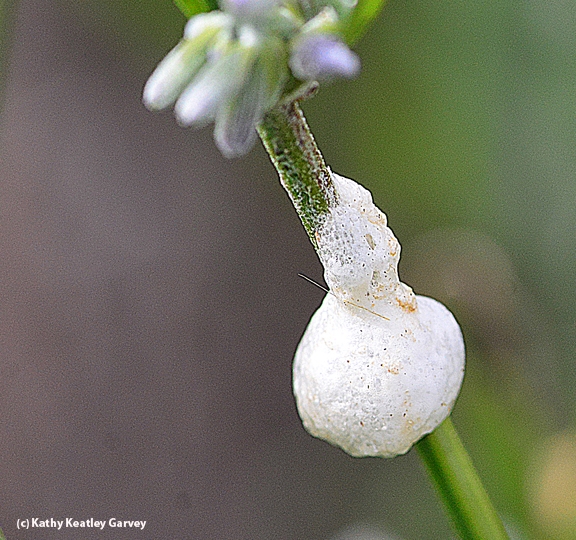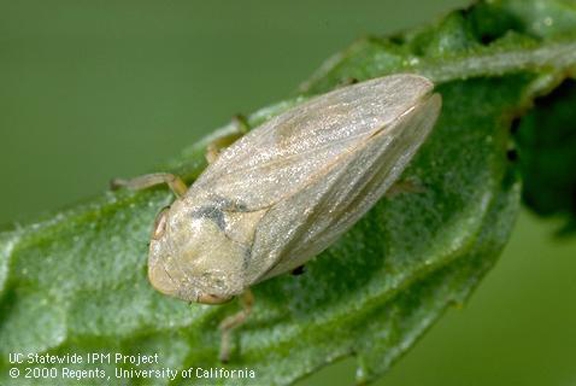Talk about a spittin' image.
When you see one spittlebug froth, you've seen them all, right? They all look alike, right?
Well, the froth does, but you'll see different shapes and sizes on your plants.
When Ria de Grassi, director of Federal Policy, California Farm Bureau Federation, recently asked us a question about her encounter with spittlebug froth, our bee guy, Extension apiculturist emeritus Eric Mussen of the UC DAvis Department of Entomology and Nematology, answered it.
"Yes," he told Ria, "it is the bee guy answering questions on spittle bugs."
Mussen, who retired last year after 38 years of service, knows a lot about bees. Hey, he's an apiculturist. But he also knows a lot about spittle bugs. Hey, he holds a doctorate in entomology.
We thought we'd share the information.
"Just like foraging bees, spittlebugs have favorite host plants," Mussen says. "And just like bees, when the favorite plant is missing or drying up, the spittlebugs move to 'Plant B.' Actually, the nymph in the spittle cannot change plants, Momma has to lay eggs on the new selection."
"They normally start on weeds and they will stay there if the weeds hang around. Nothing is hanging around like they used to when they had some some soil moisture into the summer. So, the spittlebugs have moved into irrigated landscapes."
"I do not believe that spittlebugs vector plant diseases or cause physiological damage to their host plants. They are just an eyesore. The nymphs need the spittle to keep them moist, since they are very prone to dehydration. Using a jet of water, you can wash off the spittle. The bug usually goes with it. I don't know if their sucking mouthparts get broken or not (depends on whether or not the bug stays attached and feeding all the time). Thus, I don't know if they are physically capable of going back to business after being washed off."
"While they are out of the spittle, they are very likely to dehydrate to death in our climate, so wash them off in the morning and let them roast during the day."
Mussen says there's a group of systemic insecticides that might kill them on whatever plant is treated, "but those insecticides may not be too pollinator friendly if the plant is likely to come into bloom after the treatment."
We've often heard "spittlebugs" shortened to "spit bugs." A quick and easy and descriptive term.
The UC Statewide Integrated Pest Management Program (UC IPM) says that spittlebugs occur throughout the United States "and can at least occasionally be found on almost any plant. Adult spittlebugs are inconspicuous, often greenish or brownish insects, about 0.25 inch long. Immature spittlebugs are recognized by the frothy white mass that nymphs surround themselves with on plant tissue where they feed."
What spittlebugs do is suck plant juices. And, as UC IPM says, "heavy infestations distort plant tissue and slow plant growth. The obvious and occasionally abundant masses of white foam on cones, foliage, or stems may be annoying, but the spittlebugs do not seriously harm established woody plants."
Attached Images:

